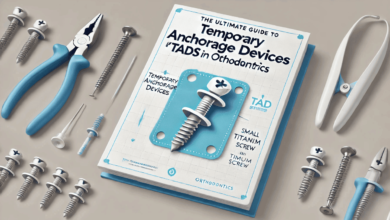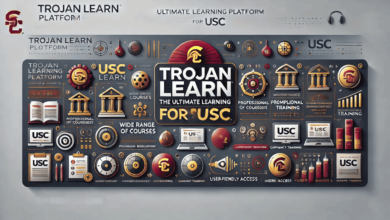What is the Text Structure of the Titanic?

The Titanic remains one of the most iconic and tragic stories of the 20th century, immortalized in history books, films, and cultural memory. Beyond its riveting narrative of grandeur and catastrophe, understanding the text structure of the Titanic involves analyzing how information about this monumental ship and its journey is organized and presented in literature, documentaries, and other media. This structure is crucial to ensuring the story is accessible, engaging, and informative to a wide audience. Let’s explore the text structure of the Titanic through chronological, descriptive, cause-and-effect, problem-and-solution, and compare-and-contrast lenses.
Chronological Structure: A Timeline of Events
One of the most commonly used text structures to describe the Titanic’s history is the chronological format. This approach provides a clear sequence of events, allowing readers to follow the ship’s story from inception to tragedy. Starting with the design and construction of the Titanic in Belfast, Ireland, this timeline highlights the ship’s luxurious features and its maiden voyage.
For instance, many historical accounts begin in 1909, when construction commenced. They proceed to April 10, 1912, when the Titanic set sail from Southampton, England. Each key moment is documented: its stops at Cherbourg, France, and Queenstown (now Cobh), Ireland; the fatal iceberg collision on April 14; and its sinking in the early hours of April 15. This structure allows readers to experience the unfolding drama as if they were witnessing it firsthand.
Why the Chronological Text Structure Matters
Understanding the chronological text structure of the Titanic is essential for grasping the series of events that led to its historic tragedy.
Descriptive Structure: Painting a Picture of the Titanic
The Titanic’s grandeur and scale are often brought to life through a descriptive text structure. This method emphasizes vivid details that immerse the reader in the ship’s opulence and technological advancements. Writers focus on its size, luxury, and cutting-edge design—qualities that earned it the nickname “The Ship of Dreams.”
Descriptions often highlight the ship’s immense proportions: 882 feet long, with a height equivalent to an 11-story building. Its interiors boasted ornate dining halls, grand staircases, and first-class accommodations comparable to five-star hotels. Even the third-class quarters, while modest, were more comfortable than many contemporary ships. The descriptive structure creates an emotional connection, making the loss of such a marvel even more poignant.
Enhancing the Narrative with Descriptive Details
This detailed approach to the Titanic’s text structure allows readers to envision the magnificence of the vessel and the heartbreaking loss experienced by so many.
Cause-and-Effect Structure: Why Did the Titanic Sink?
Another crucial text structure used in recounting the Titanic’s story is cause and effect. This format examines the factors leading to the disaster and its aftermath. Why did this “unsinkable” ship meet such a tragic end? The answers lie in a complex web of causes.
Writers often discuss the iceberg collision as the immediate cause but delve deeper into contributing factors. For instance, the ship was traveling at high speed despite warnings of icebergs in the North Atlantic. The inadequate number of lifeboats—20 for over 2,200 passengers and crew—amplified the tragedy. Additionally, the ship’s design, featuring watertight compartments, was not foolproof. Once breached, water flowed over the top of these compartments, sinking the ship faster than anticipated.
Exploring the Causes and Their Impact
This structure helps readers understand the interconnected events and decisions that culminated in one of history’s deadliest maritime disasters. By exploring the cause-and-effect text structure of the Titanic, we uncover the avoidable mistakes that contributed to its demise.
Problem-and-Solution Structure: Lessons Learned from the Titanic
The Titanic’s story also lends itself to a problem-and-solution text structure, particularly when analyzing the changes it spurred in maritime safety. The problem is evident: the catastrophic loss of life due to design flaws, inadequate safety measures, and poor decision-making. The solutions, however, emerged in the aftermath.
In response to the tragedy, significant reforms were implemented. The International Convention for the Safety of Life at Sea (SOLAS) was established in 1914, mandating sufficient lifeboats for all passengers, regular lifeboat drills, and continuous radio communications on ships. Additionally, shipping routes were altered to avoid iceberg-prone areas, and the International Ice Patrol was created to monitor and report iceberg movements.
Turning Tragedy into Progress
This structure demonstrates how the Titanic’s lessons continue to shape maritime practices, turning a tragic problem into an opportunity for progress. Highlighting this problem-and-solution text structure of the Titanic emphasizes its impact on global safety standards.
Compare-and-Contrast Structure: Titanic vs. Other Ships
A compare-and-contrast text structure highlights how the Titanic differed from other ships of its era and how modern ships address safety concerns. The Titanic was celebrated for its unprecedented luxury and engineering feats, setting it apart from contemporaries like the RMS Lusitania or RMS Mauretania. However, these comparisons often reveal the Titanic’s shortcomings, particularly regarding safety.
Comparing Titanic’s Legacy to Modern Innovations
Modern cruise ships, for example, benefit from advanced navigation technology, radar systems, and stringent safety regulations that were nonexistent in the Titanic’s time. Comparing the Titanic to today’s vessels underscores the advancements in maritime safety while emphasizing the historical significance of the Titanic’s legacy.
The Emotional Impact of Text Structures
The Titanic’s story is not just a series of facts and figures; it’s a deeply emotional narrative that resonates with audiences worldwide. Each text structure contributes to this impact in unique ways. Chronological accounts build suspense as they approach the fateful collision. Descriptive passages evoke awe and sadness by highlighting the ship’s beauty and the scale of the tragedy. Cause-and-effect analyses provoke reflection on human error and the consequences of hubris, while problem-and-solution structures inspire hope through the progress achieved in response to disaster.
Ensuring the Legacy Lives On
By employing these diverse text structures, writers and historians ensure that the Titanic’s story remains compelling and relevant, reminding us of both the ship’s grandeur and the lessons learned from its demise.
FAQs
What is the text structure of the Titanic story?
The text structure of the Titanic story can vary. Common structures include chronological (timeline of events), descriptive (vivid details of the ship’s features), cause-and-effect (reasons for its sinking), problem-and-solution (lessons learned), and compare-and-contrast (differences between Titanic and other ships).
Why is the chronological text structure important for the Titanic?
The chronological text structure helps readers follow the sequence of events leading up to the tragedy, creating a vivid understanding of how the disaster unfolded.
How does the descriptive structure enhance the Titanic’s narrative?
The descriptive structure brings the Titanic’s grandeur to life, making readers appreciate its design and the scale of loss that occurred.
What lessons were learned from the Titanic disaster?
The disaster led to significant reforms in maritime safety, such as better lifeboat regulations, continuous radio communications, and the establishment of the International Ice Patrol.
How does comparing the Titanic to modern ships help us?
It highlights technological advancements and improved safety measures, emphasizing the progress made since the Titanic’s era.
Conclusion
The Titanic’s story is a multifaceted narrative that continues to captivate and educate. By examining its text structure through various lenses—chronological, descriptive, cause-and-effect, problem-and-solution, and compare-and-contrast—we gain a richer understanding of this historic event. Each structure brings unique insights, from the precise timeline of events to the vivid descriptions of its grandeur and the analysis of its tragic mistakes. The Titanic’s legacy is not only a reminder of human ambition and error but also a testament to resilience and progress. Its lessons have shaped modern maritime safety, ensuring that such a tragedy never repeats. This enduring tale serves as both a historical landmark and an invaluable source of reflection and learning.



